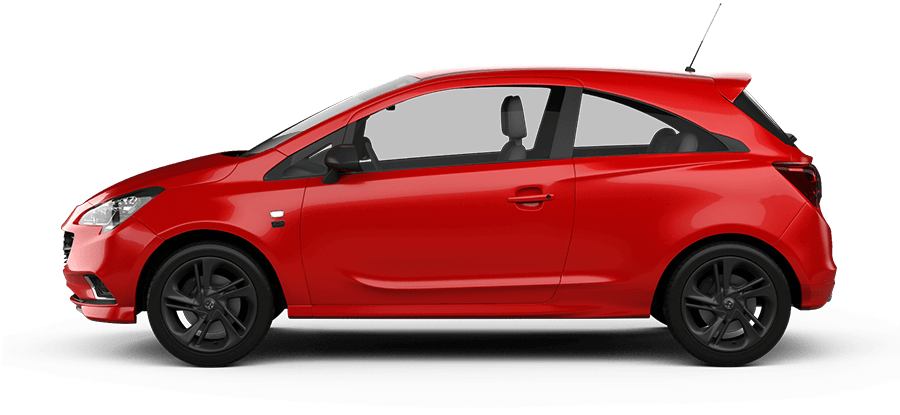
Without certain features, a car wouldn't be complete. This was true even in the 1980s when many vehicles didn't have them. Crumple zones on minivans quickly became industry norms and impact bumpers eventually were replaced by crumple areas. Even an old car could have a CB radio. The two-way communication device was useful, but it was difficult to use. As cellphones became more popular, the trend died.
Air conditioner
Car air conditioning systems are an important part of any vehicle. This feature provides a cool and comfortable atmosphere to the occupants of the vehicle. Air pollution is extremely harmful to the human body. For passengers to be protected from the harmful effects of air pollution, the air conditioner filter is essential. Air conditioners are an integral part of modern cars. But, air conditioners can be very expensive to install. It is therefore important to understand the system's workings.
Air conditioning systems in cars use a compressor for cooling the refrigerant. The refrigerant is then cooled outside and dispersed to the outside. The compressor is usually found in the engine bay. It's an axial piston compressor compressor. The compressor converts the compressed to the condenser. The condenser is located in front of the radiator, and it lowers the temperature of the refrigerant. The liquid refrigerant is then routed through the condenser to the evaporater.

USB charging outlet
Some cars do not have a USB charging socket. These outlets may be located in the glove box, center console, or dashboard, but some models do not. You should use the included ports if you intend to use your device for charging a phone or playing games. An important feature to remember is the availability of a USB charging port in your car. You should consider purchasing a charger that has additional safety features.
A car USB charger can be used to charge any number devices including power banks, music players and cameras. You may want to leave the socket in place if you have multiple passengers and want to keep multiple devices charged while on the road. If you want to charge multiple devices at once, the socket can be left in its place. You might also be able use the outlet to charge portable devices like a tablet while driving.
Keyless ignition
Drivers can be at risk from keyless ignition systems when it comes to safety. The keyless ignition system activates when the fob is removed from a car. It can also keep it on even if the driver does not need it. Some cars will sound an emergency alarm if the fob gets removed. Others will put the vehicle into park automatically as soon as the door opens. Some cars will shut down the engine when the driver is not in the vehicle for a set amount of time.
While keyless ignition systems work by simply pressing a button, most are operated by push buttons. Some have rocker and rotary switches. Some models also have alerts that allow the driver to know if the ignition is tampered with. This feature might not be suitable for all vehicles. It's best to consult the owner's manual to find out what options are available. The majority of keyless ignition systems are safe and can be useful additions to vehicles.

Automatic climate control
One of the benefits of auto air conditioning is the ability to control the cabin temperature and humidity automatically. A number of sensors are installed on the vehicle's dashboard to monitor outside temperatures and humidity. High-end car manufacturers have added technology to adjust the temperature and humidity depending on the sun's intensity. These features can make driving more enjoyable and may even prevent nausea. You should check if your car features an automatic climate control.
You can program various parts of your car's air conditioner system depending on which climate control feature you have. You can adjust fan speeds, air distribution, or recirculation settings. You can normally set the temperature by pressing the "A/C” button on the infotainment monitor or in the center stack. To activate the system, press the AUTO button after you have selected the desired temperature.
FAQ
How long does a good mechanic take?
To become a skilled mechanic, you need years of experience and practice. Working under the guidance of a professional mechanic is the best way to learn how repair cars.
You will spend time in a workshop learning everything you can about cars. Mechanical engineering books will be required to learn about mechanics and design.
Additionally, you will need to attend an auto school.
It's important to start early. You don't have to wait until you are older to start studying automotive technology. Start studying automotive technology now to become a mechanic.
Is it important which college I go?
Non, really. There are no differences between colleges when it comes to getting into the automotive industry. You will find that some schools offer better programs than others. If you are looking for something more specific, consider going to another school.
What is the distinction between a mechanic or an automotive technician?
The two are similar but not identical. The mechanic fixes cars while the technician maintains them.
A mechanic must possess good manual dexterity, and be able perform simple tasks efficiently. They should be able to accurately diagnose problems and repair them efficiently.
An automotive technician must be more technically proficient than a mechanic. They should be able read blueprints and use tools like drills and wrenches.
They must be able and competent to safely perform complicated procedures. They must also be familiarized in different types and electrical systems.
They must also be capable of understanding how parts interact.
This means that mechanics usually make less money than automotive technicians. However, both careers offer great opportunities.
Statistics
- Apprentice mechanics earn significantly less hourly than mechanics who have completed training, with a median wage of approximately $14.50 an hour, according to PayScale. (jobhero.com)
- The U.S. Bureau of Labor Statistics (BLS) reports that the job outlook for automotive service technicians and mechanics is expected to decline by 4% from 2019 to 2029. (indeed.com)
- 52% of Mechanics in the United States think their salaries are enough for the cost of living in their area. (indeed.com)
External Links
How To
How to correctly diagnose your vehicle for repairs
The symptoms of your vehicle are the first thing you need to look at in order to determine whether it is in dire need of repairs. Follow these steps to properly diagnose your vehicle.
-
Check engine lights. Inspect the dashboard light indicators. These include the engine lights, the oil pressure gauge and the battery light indicators. The RPM gauge and coolant temperature gauge should also be checked. If any of them have been flashing for several days, it may mean something is wrong with your vehicle.
-
Pay attention to the treads on your tires. Tire wear can lead to problems in handling and brake performance. It is also important to inspect the wheel treads. They should be smooth and clean. This can be done by removing the wheels from the vehicle and taking them off. To check the condition of your treads, use a flashlight.
-
Check the level of brake fluid. You must always monitor the level of your brake fluid. This helps ensure that your brakes operate properly. Low brake fluid levels could cause your brakes to fail when you apply pressure.
-
Make sure to test the suspension system. It is common for vehicles to have a suspension system which absorbs shocks or vibrations. This suspension system provides greater control and smoother acceleration and deceleration. If your vehicle has a suspension problem, it might feel wobbly or shake uncontrollably. To determine whether your vehicle may have a suspension issue, you can try to put weight on the rear or front axle and watch the movement.
-
Examine the steering wheel. Steering columns are used to connect the steering wheel to the rest of the vehicle's components. Sometimes, steering columns are damaged by accidents. It is recommended to replace any steering column that feels loose, or shakey.
-
Pay attention to the exhaust pipe. The exhaust pipe helps move gases from a combustion chamber into the atmosphere. Your cabin will be effected if your exhaust pipe cracks or leaks. If your tailpipe bends, it is important to fix it immediately.
-
Look under the hood. If you see anything unusual, take a look under the hood. Your engine could be leaking fluids. If you smell something strange coming from your engine compartment you should call a professional technician.
-
Make sure to check the air filter. The air filter in your vehicle collects dirt and dust from the environment. Dirty air filters can cause your vehicle to run poorly. Replace your air filter regularly.
-
Verify the fan belt. Your vehicle's fan belt connects the engine to the transmission. If the fanbel breaks, your engine won't turn. It's easy to replace the belt. All you need are a screwdriver & pliers.
-
You should inspect the radiator and hoses. The radiator hose carries water from the radiator to the engine. It can become cracked or damaged and leak hot liquid onto your engine. To repair the leaky hose, all you need is a pair if needle-nosepliers.
-
Be sure to inspect your windshield wipers. Windshield wipers use electricity to remove snow and rain. They can leave streaks on your windows glass if they stop working. Change the washer fluid to fix the problem.
-
Check the battery cables. The battery cables provide power for the electrical systems in your car. Always disconnect the negative wire before you replace batteries. Failure to do so can damage your alternator.
-
Pay attention to your headlights. Headlights illuminate the road ahead of you. They can make it difficult to see if they stop working. To determine if your bulbs are out of date, check them.
-
Make sure you have your lights on. The lights are there to warn other drivers if they approach you at night. You may be distracted by the light and end up in an accident.
-
You should inspect your brakes. Before you collide with another vehicle, brakes will slow down the car. If they aren't working correctly, you could lose control of your car and crash.
-
Check the oil regularly. Your engine will stay lubricated by the oil. It protects metal parts and prevents them from wearing too quickly. It is recommended that you change your oil at least once per month.